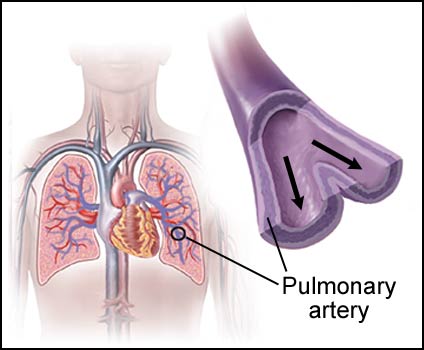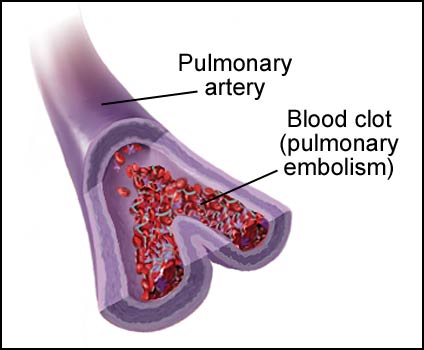
Pulmonary Embolism
A pulmonary embolism is a blood clot that had “traveled” to the lungs, most commonly from blood clots in the legs. The clots lodge in the pulmonary arteries, the blood vessels that deliver blood to the lungs from the right side of the heart. Symptoms of pulmonary embolism are varied but can include shortness of breath and chest pain. If the clots are large, they can cause death. The treatment of a pulmonary embolism is usually to use blood thinners although in severe cases, surgery to remove the clot may be recommended.
Figure 1: Lungs with pulmonary arteries and veins that carry blood to and from the lungs.
Figure 2: Close-up view of a normal pulmonary artery.
Figure 3: Pulmonary artery with a blood clot blocking blood flow.
Visit Ohio Heart and Vascular Center for more information.


